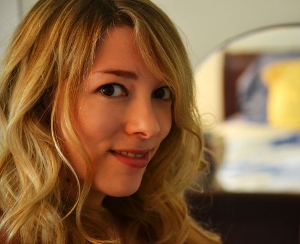
Words of Becoming
Contributor’s Marginalia: Sarah Crossland on “Rune Poem” by Amit Majmudar
For many people, magic surrounds the runic alphabets. Precursors to our familiar Latin letters, they have come to be associated with pagan rituals, secret stones, and a mystery of lost language that is in some ways impenetrable, but nonetheless bewitching. The original Rune Poems (one each survives from Norwegian, Icelandic, and Anglo-Saxon runes) were rosters of the runic alphabets and a brief poetic—perhaps mnemonic—description of each. In the Anglo-Saxon alphabet, every rune was associated with a concrete noun or abstract concept common to living. These runes, aside from combining to make language, individually meant things like need or hail, wealth or horse. The Rune Poems, then, became not only portraits of alphabets, but also portraits of the lives of the people who used them. They spoke wisdom. They spoke of evil and bliss, what troubles the heart.
Amit Majmudar’s “Rune Poem” reinvigorates the Anglo-Saxon runes and introduces them to the twenty-first century, in a way saying that though languages die, that does not mean they cannot still be of use to us—that they cannot still have something to say about our humanness. Majmudar describes the runes and their meanings with a blending of old and new. Here, the Hell’s Angels ride with sanctity beside “Thor’s ur-ox.” “The rose of a weekend” is as precious as the earth, “an heiress rumored rich.” Everything we encounter in Majmudar’s poem, and in life, can be holy or dangerous. It is our surprise to find what is which.
And what would magic be without diversion, what we least expect? Sound in poetry has traditionally been used to satisfy. One sound marries the next; vowels are tied; a rhyming couplet closes the conflict of a sonnet and we can all rest safe in the night. But Majmudar does not seal with his sounds—he braids, he leaves them teetering at a dark edge. Some couplets rhyme, some rhyme slant, some have internal rhyme, and still others rhyme several lines apart. As in life, here too there is no telling—we must listen, we must be prepared. In one of the most startling moments in the poem, the first couplet describing Fe, a wolf “eyes [us], blinking cold coins.” This is an unsettling catachresis—in this use, a substitution of an expected word (“gold”) for a similar-sounding, but more harrowing descriptor. These coins are not warm, as they would be in the hand. When coins are associated with the eyes, and when they are cold, we cannot help but think of weighing down the eyelids of the dead. Money becomes not only linked to wealth, but also—two letters apart—to death. This is the power of the runes, and of language: how they can transform one thing into another.
In elementary school, I learned that the word “is” is not like other verbs. It is used for inaction, for a “state of being,” and it is a weak verb. Only two letters. Not as sharp or biting as “sharpen” or “bite.” But in his “Rune Poem,” Majmudar reminds us how “is” can alchemize—it is a verb of becoming: “wealth is a wolf,” “ice is deceiving,” and “earth is an heiress.” This is, indeed, a world of magic we live in, if we let language do its bidding, and if—as in the description of the rune Bjarkan—we let “the Gods remain.”
